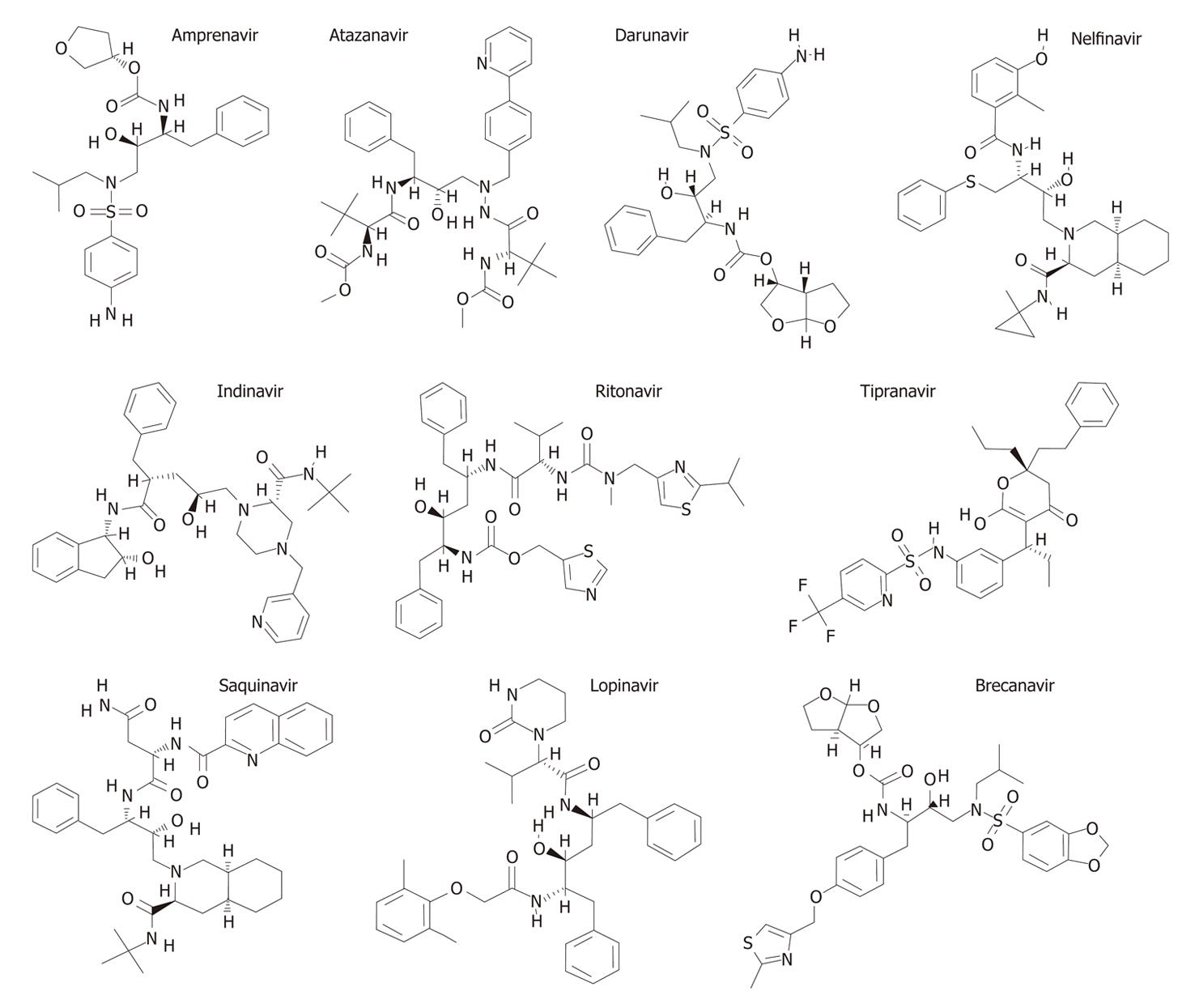Copyright
©2010 Baishideng Publishing Group Co.
World J Biol Chem. Feb 26, 2010; 1(2): 21-30
Published online Feb 26, 2010. doi: 10.4331/wjbc.v1.i2.21
Published online Feb 26, 2010. doi: 10.4331/wjbc.v1.i2.21
Figure 1 Morphological stages of Candida albicans (C.
albicans) and differential expression of SAP genes. Both temperature and pH values of growth media directly influence the yeast into hyphal transition as well as the expression of SAP genes. In this sense, the expression of SAP1-SAP3 and SAP8-SAP10 has been detected in yeast cells, while SAP4-SAP6 has been associated with the filamentous forms.
Figure 2 Aspartyl protease inhibitors used in the current human immunodeficiency virus (HIV) chemotherapy.
Figure 3 Different roles performed by C.
albicans Saps in vital biological processes as well as during the different steps of interaction with host structures. Both physiological and pathological processes are inhibited (red lines) in different extensions, depending on HIV protease inhibitors (PIs), except for the yeast to mycelia transformation (differentiation) where conflicting results were observed (dotted red line).
-
Citation: dos Santos ALS. HIV aspartyl protease inhibitors as promising compounds against
Candida albicans André Luis Souza dos Santos. World J Biol Chem 2010; 1(2): 21-30 - URL: https://www.wjgnet.com/1949-8454/full/v1/i2/21.htm
- DOI: https://dx.doi.org/10.4331/wjbc.v1.i2.21











